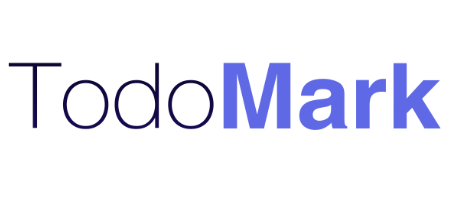Satellite Operator Training Simulators Market Poised for Strong Growth Driven by Expansion in Satellite Missions and Operator Skill Development
The global Satellite Operator Training Simulators Market is witnessing significant momentum as the demand for space-based communication, navigation, and Earth observation increases worldwide. These simulators play a critical role in preparing operators for real-world mission scenarios by providing advanced, realistic, and safe environments to practice satellite control, payload management, and system troubleshooting.
With the commercial satellite sector expanding rapidly and new constellations entering orbit, the need for skilled satellite operators has surged. Training simulators are thus becoming indispensable to ensure mission reliability, reduce operational risks, and enhance situational awareness. The market is expected to grow at a substantial CAGR over the next decade, fueled by ongoing investments in satellite infrastructure and operator competency enhancement programs.
Rising collaborations among space agencies, defense organizations, and commercial operators have also accelerated adoption. These partnerships aim to standardize training protocols and develop next-generation simulator platforms equipped with artificial intelligence (AI), digital twins, and virtual reality (VR) technologies for more immersive operator experiences.
Market Drivers
The key drivers propelling the Satellite Operator Training Simulators Market include:
-
Increasing Satellite Launch Activity: The surge in satellite launches for communications, remote sensing, and Earth observation has heightened the demand for trained operators, thereby increasing simulator adoption.
-
Advancements in Training Technology: Integration of AI, machine learning, and mixed reality tools is enhancing simulation accuracy and user immersion, leading to improved learning outcomes.
-
Growing Focus on Space Safety and Mission Assurance: Operators require precise training to mitigate risks associated with satellite malfunctions, debris collisions, or orbit management failures.
-
Government Support and Space Program Expansion: National and regional investments in space education and operational preparedness are stimulating demand for advanced simulation tools.
Together, these drivers are shaping a market ecosystem centered on operational readiness, mission safety, and human performance optimization.
Market Restraints
Despite strong momentum, the market faces several challenges that could moderate growth in the near term:
-
High Development and Maintenance Costs: Designing high-fidelity simulators with real-time telemetry, orbital dynamics, and integrated command systems requires significant investment.
-
Limited Access for Emerging Space Programs: Smaller space nations and startups often lack resources to acquire or maintain sophisticated simulation platforms.
-
Complex Regulatory Frameworks: Differences in national space policies and operational standards can hinder uniform training methodologies and cross-border simulator deployment.
However, as technological innovation drives cost reductions and modular design approaches gain traction, these restraints are expected to gradually ease.
Market Opportunities
The global Satellite Operator Training Simulators Market offers promising opportunities across various segments:
-
Digital Twin Integration: Using digital replicas of satellite systems allows real-time simulation of mission conditions, facilitating predictive training and system diagnostics.
-
Virtual and Augmented Reality Expansion: Immersive VR and AR-based simulation environments are reshaping operator learning experiences, enabling hands-on practice without physical assets.
-
Commercial Satellite Constellations: As private satellite operators expand their fleets, the need for customized simulator solutions tailored to specific mission architectures is rising.
-
Academic and Research Partnerships: Collaborations between training institutes and research centers are fostering innovation in simulation algorithms and instructional frameworks.
These trends are projected to transform the market into a key enabler of space workforce development and mission success assurance.
Request a Sample Report:
https://researchintelo.com/request-sample/60305
Market Dynamics and Regional Insights
The Satellite Operator Training Simulators Market is characterized by robust dynamics driven by technological convergence and regional policy support. North America currently leads the market, bolstered by strong investments from government space agencies and private sector enterprises. The region’s focus on next-generation satellite operations training and its mature space ecosystem contribute significantly to overall market revenue.
Europe follows closely, with increasing initiatives aimed at harmonizing simulator standards across member states. Programs supporting operator certification and simulation-based mission preparation are enhancing European competitiveness in the space domain.
Meanwhile, the Asia-Pacific region is emerging as a high-growth market. Expanding national space programs in countries like India, Japan, and South Korea, along with the rise of private satellite ventures, are driving simulator demand. These nations are heavily investing in indigenous training facilities to develop a skilled satellite operations workforce.
The Middle East and Latin America are also seeing steady growth, supported by investments in communication satellite projects and regional cooperation agreements for space capability development.
Growth Trends and Future Outlook
The future of the Satellite Operator Training Simulators Market is expected to be shaped by rapid technological evolution and strategic global collaborations. The incorporation of AI-driven adaptive learning systems and cloud-based simulator frameworks is expected to redefine training efficiency and scalability.
Moreover, simulator manufacturers are increasingly focusing on interoperability—creating platforms compatible with various satellite control systems and mission architectures. This will enable flexible training for diverse operational scenarios across multiple orbital regimes, including geostationary (GEO), medium-Earth orbit (MEO), and low-Earth orbit (LEO).
The growing emphasis on remote training solutions—especially post-pandemic—has also accelerated the development of web-based and VR-enabled simulation systems. This digital shift is making operator training more accessible, cost-effective, and sustainable across global markets.
View Full Report:
https://researchintelo.com/report/satellite-operator-training-simulators-market
Market Value and Forecast
According to Research Intelo’s analysis, the Satellite Operator Training Simulators Market is projected to surpass several hundred million USD by 2032, growing at a healthy compound annual growth rate (CAGR). The expansion is driven by the surge in satellite launches, particularly in low-Earth orbit constellations, and the parallel need for sophisticated mission training infrastructure.
By type, hardware-based simulators continue to hold a significant market share, though software-driven cloud platforms are growing rapidly. End users primarily include space agencies, defense organizations, commercial satellite operators, and training institutes.
With the global emphasis on space sustainability and mission reliability, simulator solutions are evolving into strategic assets—bridging the gap between human capability and autonomous satellite control systems.
Strategic Implications for Stakeholders
Industry stakeholders—including policymakers, space agencies, and training solution providers—are recognizing the strategic importance of simulation in building a resilient space workforce. Governments are integrating simulation-based curricula into space education programs, while commercial players are leveraging simulators to accelerate operator certification cycles and reduce mission risks.
Research Intelo emphasizes that simulator technology will remain pivotal in ensuring that satellite operations remain safe, efficient, and adaptable in an increasingly congested orbital environment.
Enquire Before Buying:
https://researchintelo.com/request-for-customization/60305
Conclusion
As the global space industry expands, the Satellite Operator Training Simulators Market stands at the intersection of technology, training, and safety. Its evolution mirrors the broader transformation of the satellite sector—from limited national programs to a dynamic, multi-stakeholder ecosystem.
- Искусство
- История и факты
- Ремесла
- Танцы
- Напитки
- Фильмы
- Фитнесс
- Питание
- Игры
- Садоводство
- Здоровье
- Дом
- Литература
- Музыка
- Сеть
- Другое
- Вечеринка
- Религия
- Поход по магазинам
- Спорт
- Театр
- Здоровье



